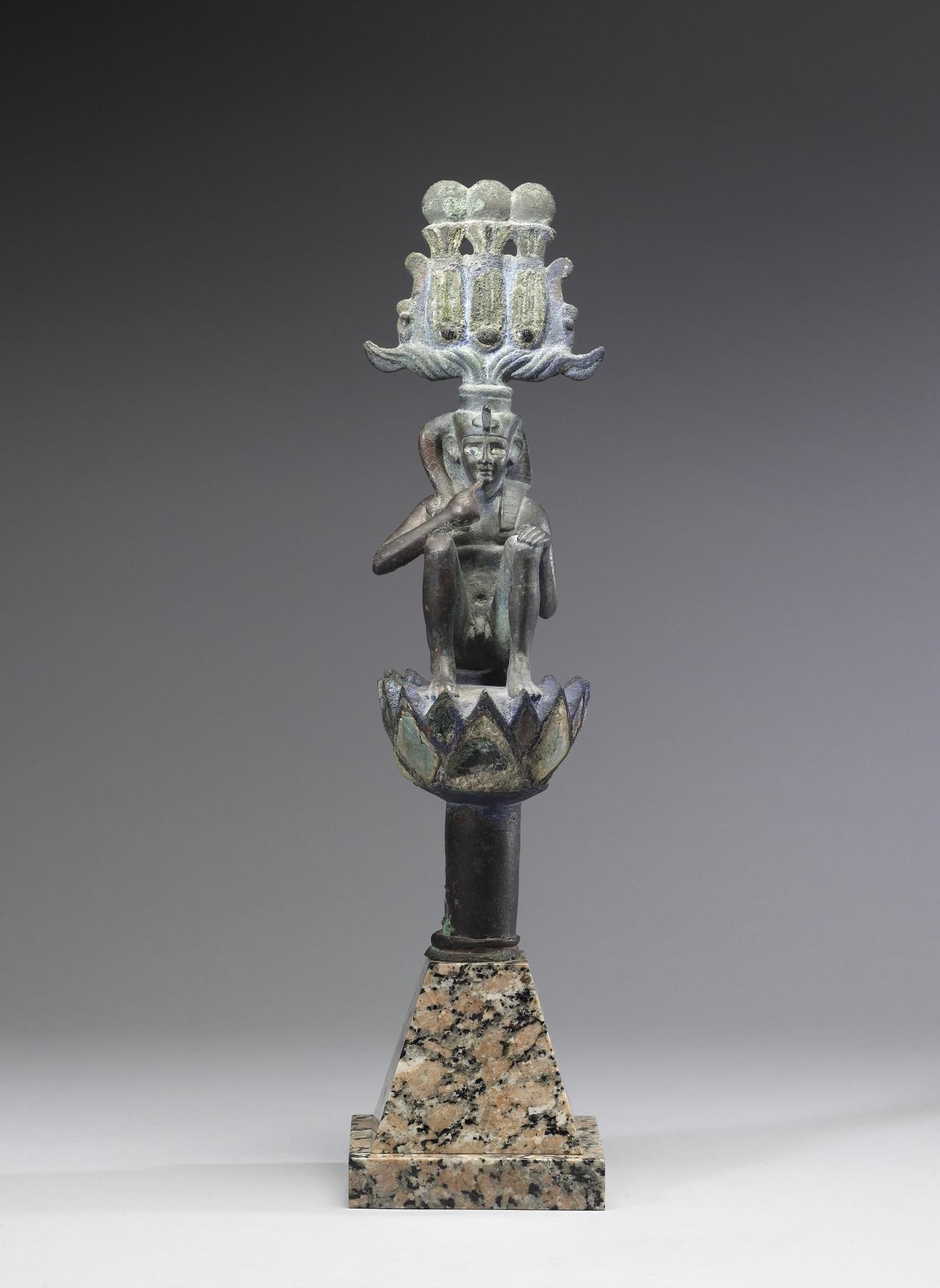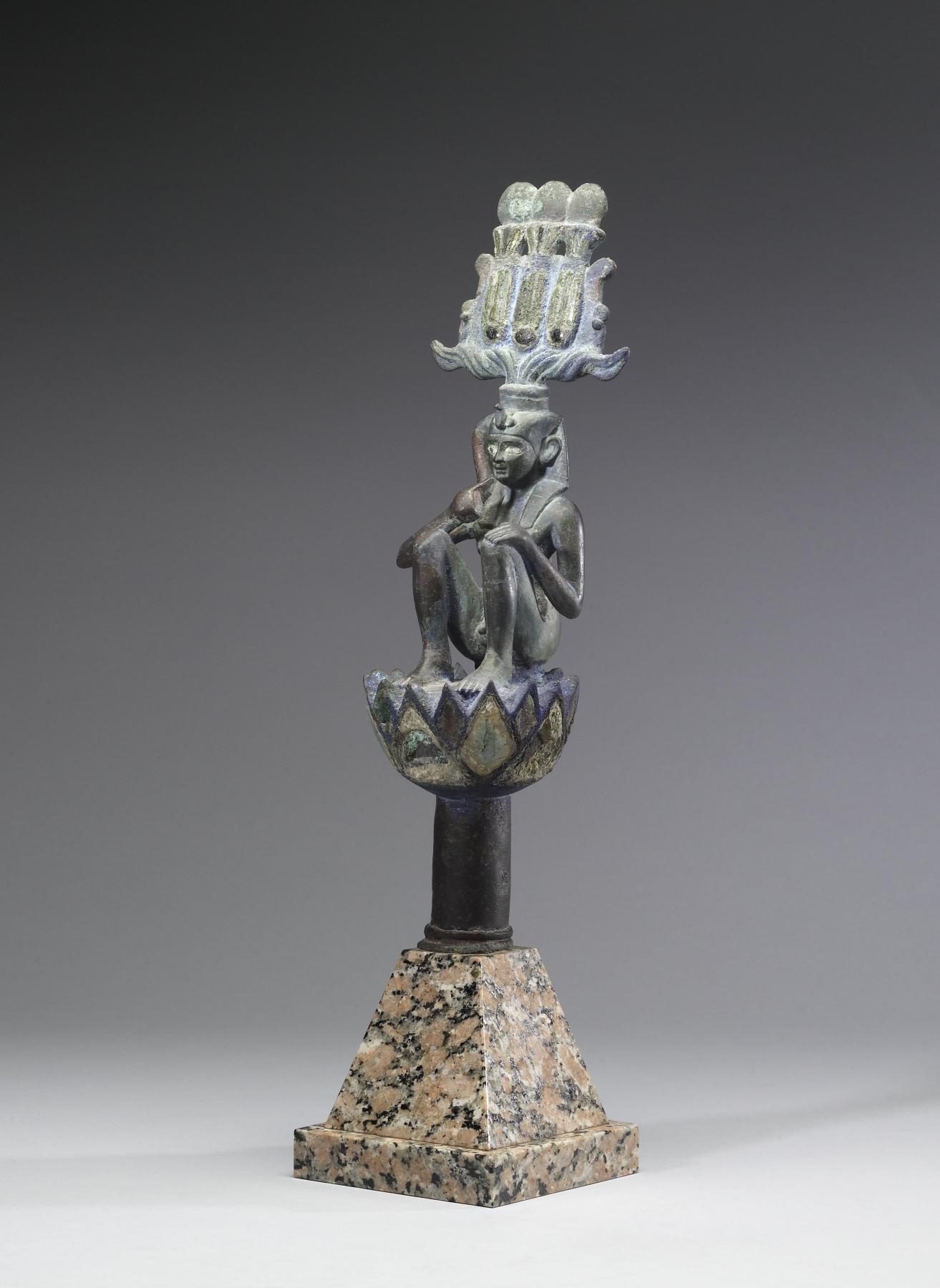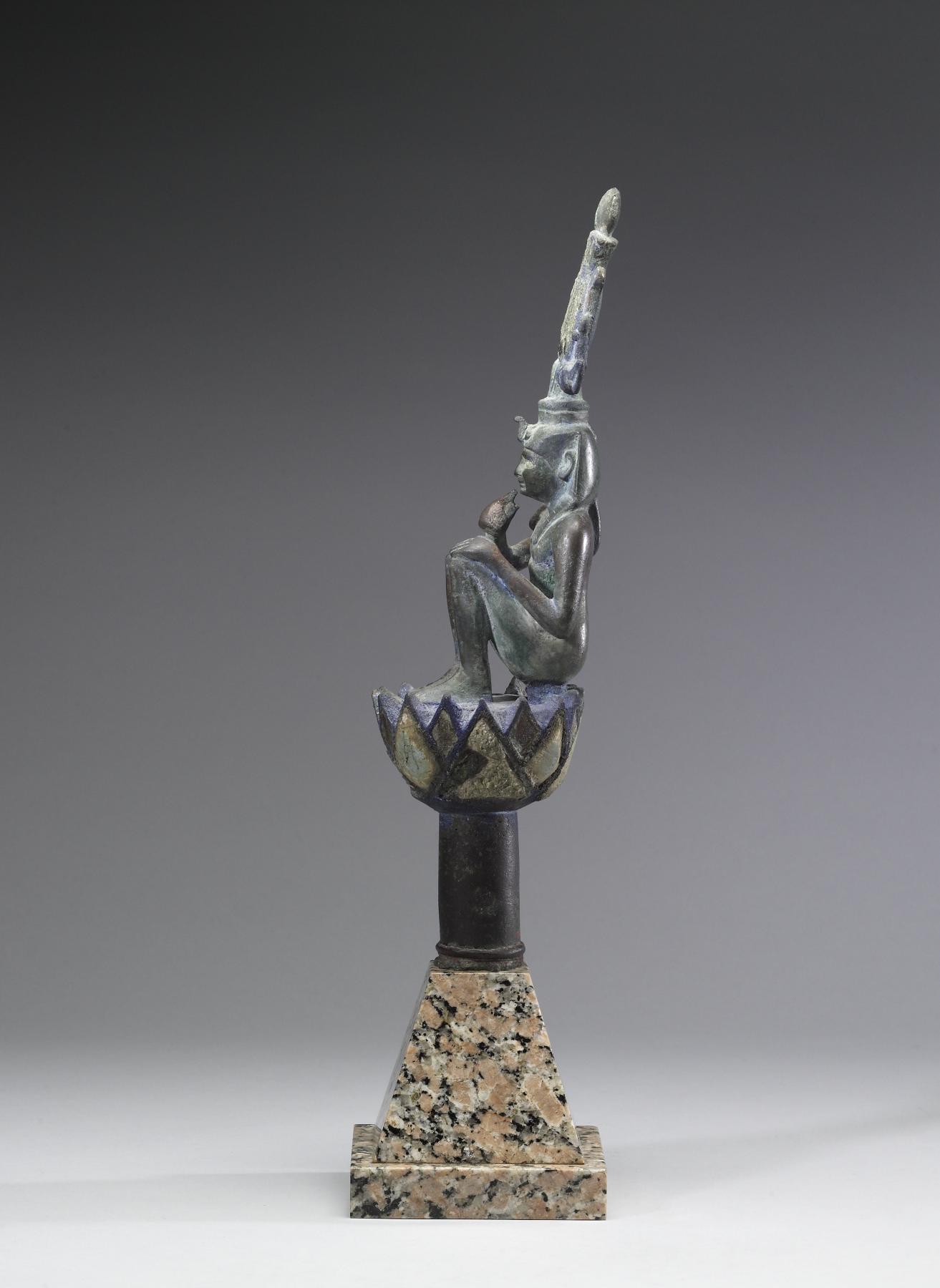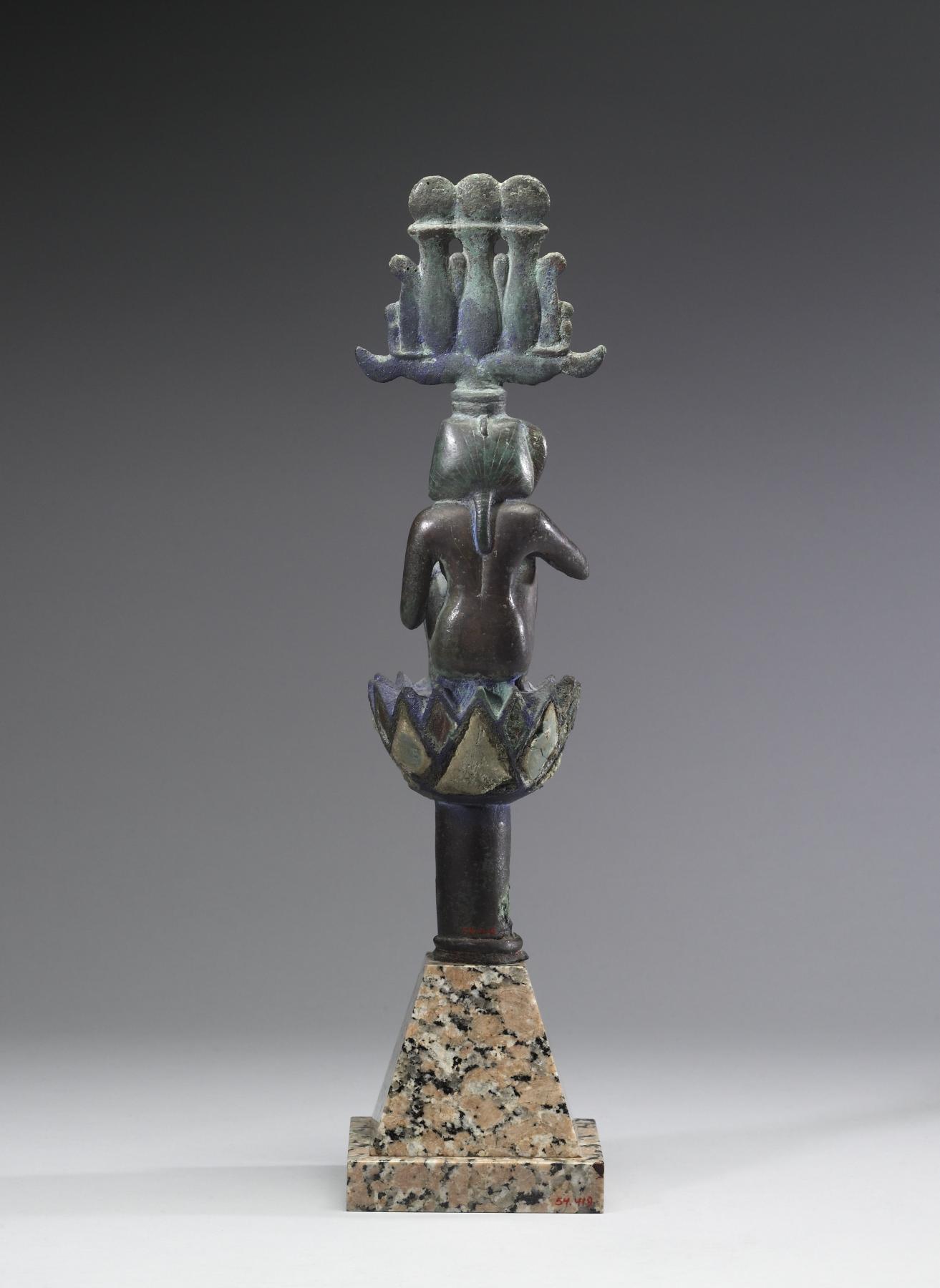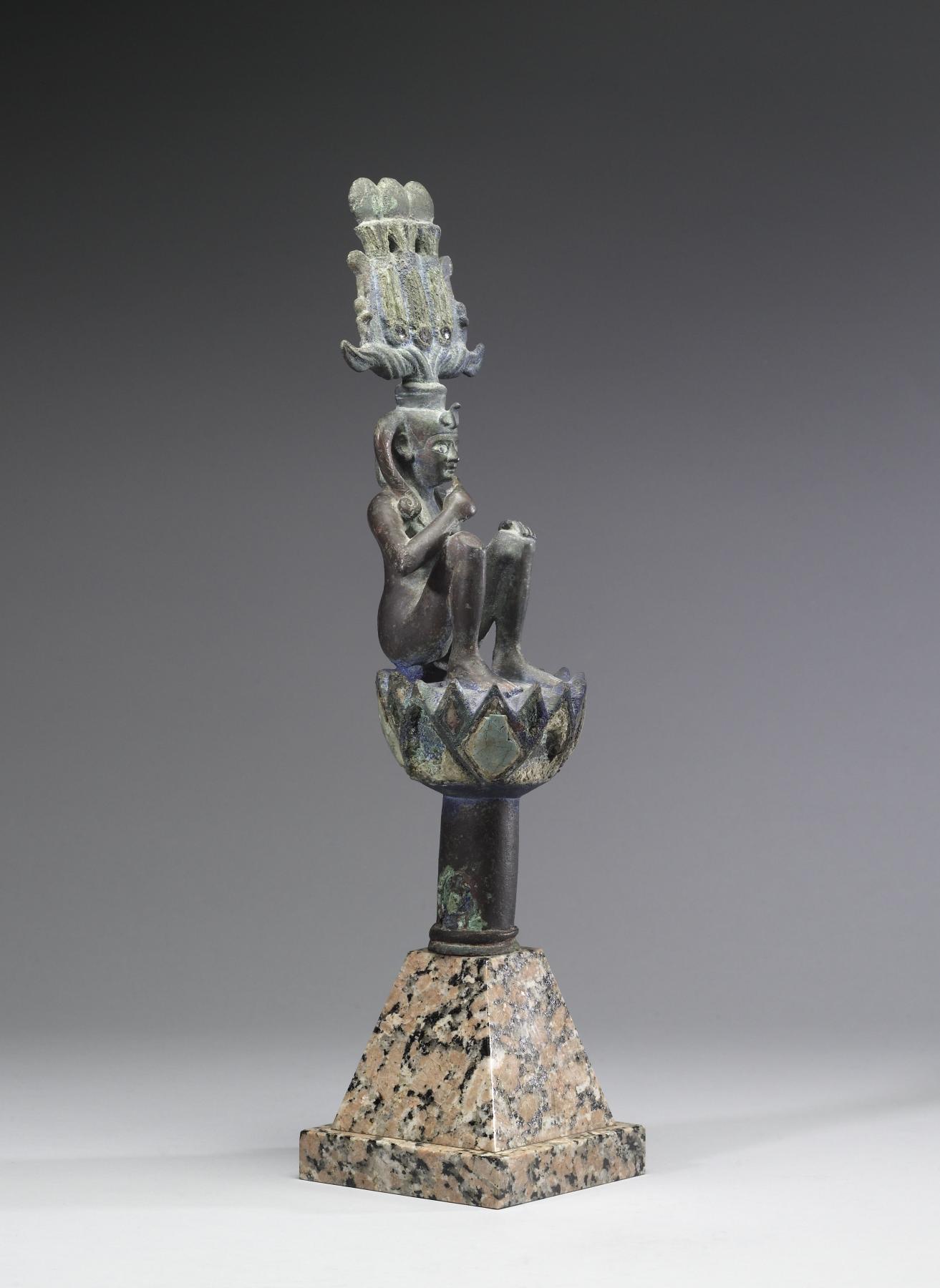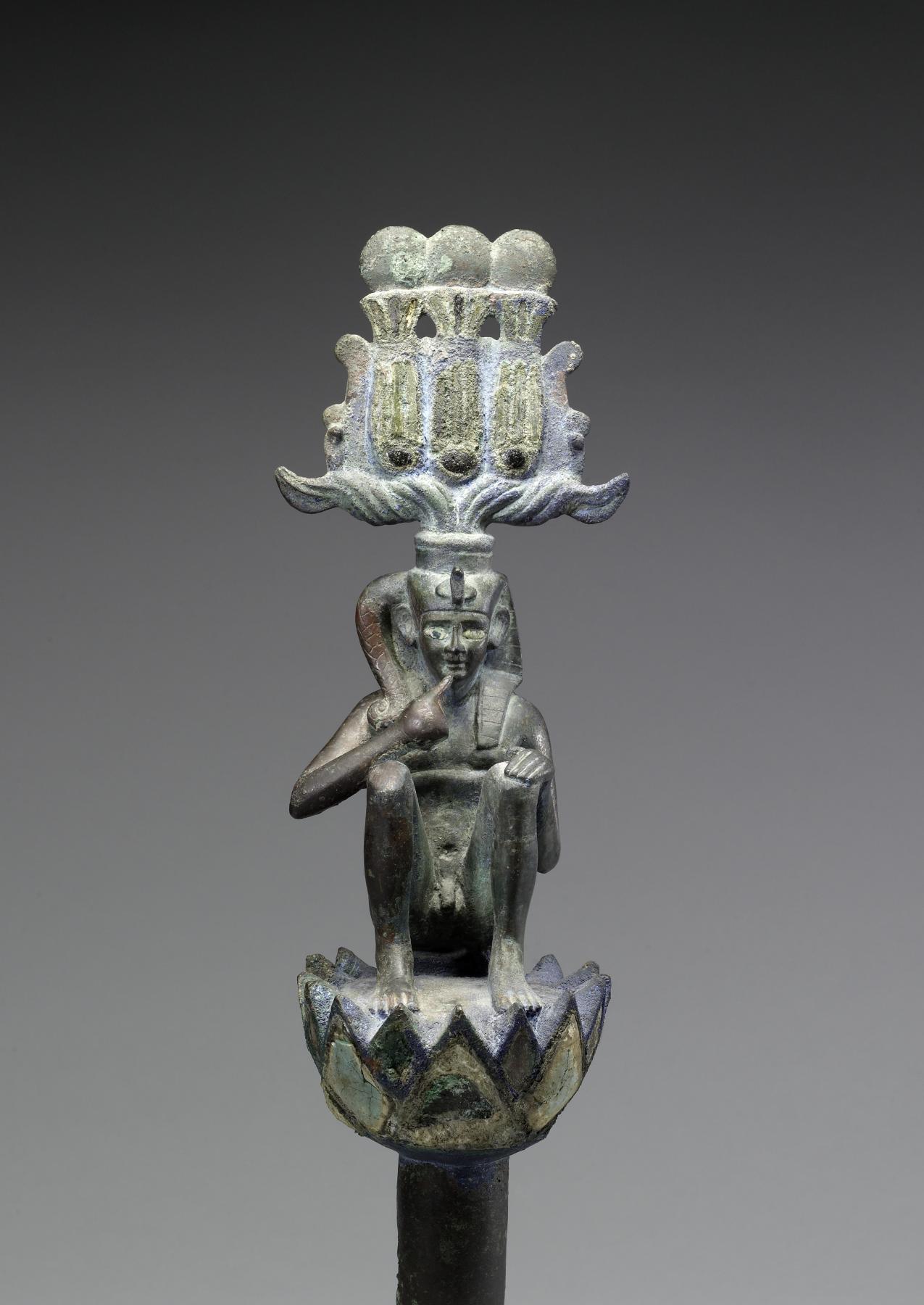Juvenile God on Lotus
(Ancient Egypt and Nubia )
The lock of hair that this god wears on one side of his head, the placement of his raised finger to his mouth, and his nudity were recognized symbols of childhood in ancient Egyptian iconography. His crown and the lotus blossom beneath him identify him as a solar deity and god of renewal. This powerful symbol of a sun god rising from the lotus recalls one version of the Egyptian creation myth, wherein the "first god" rises from a lotus in primeval waters, setting in motion the whole of creation. This figure likely once adorned the top of a wooden staff used by a priest in processions.
Provenance
Provenance (from the French provenir, 'to come from/forth') is the chronology of the ownership, custody, or location of a historical object. Learn more about provenance at the Walters.
Dikran Kelekian, New York and Paris [date and mode of acquisition unknown]; Henry Walters, Baltimore, 1911, by purchase; Walters Art Museum, 1931, by bequest.
Exhibitions
| 2013-2014 | Egypt’s Mysterious Book of the Faiyum. The Walters Art Museum, Baltimore. |
Conservation
| Date | Description | Narrative |
|---|---|---|
| Examination | Examined, cleaned | |
| Treatment | Examined, cleaned | |
| Examination | Examined and cleaned in preparation for exhibition. | |
| Treatment | Examined and cleaned in preparation for exhibition. |
Measurements
H: 13 3/4 × W: 4 5/16 × D: 4 5/16 in. (35 × 10.9 × 11 cm); H with Base: 18 1/8 × W: 4 7/16 × D: 4 7/16 in. (46 × 11.3 × 11.2 cm); Base H: 4 1/8 × W: 4 7/16 × D: 4 7/16 in. (10.5 × 11.3 × 11.2 cm)
Credit Line
Acquired by Henry Walters, 1911
Location in Museum
Not on view
Accession Number
In libraries, galleries, museums, and archives, an accession number is a unique identifier assigned to each object in the collection.
In libraries, galleries, museums, and archives, an accession number is a unique identifier assigned to each object in the collection.
54.419

